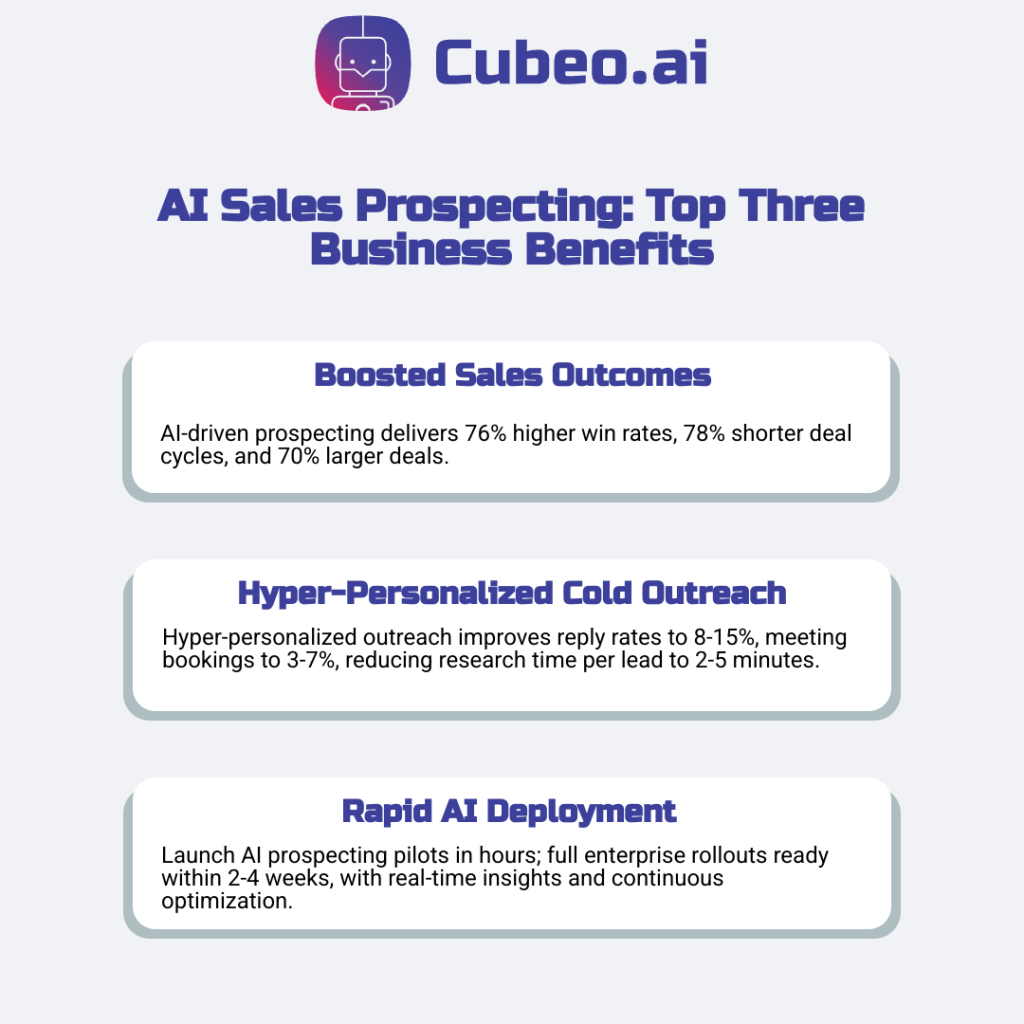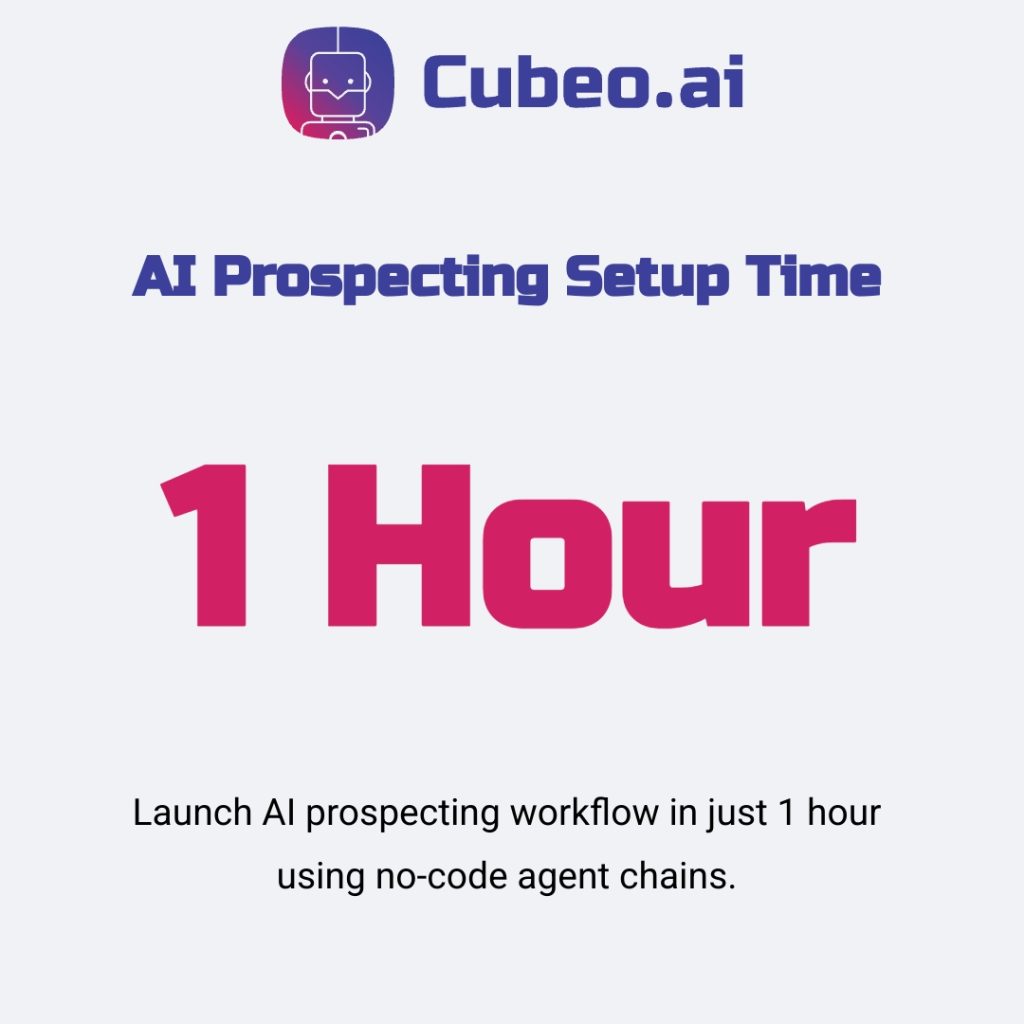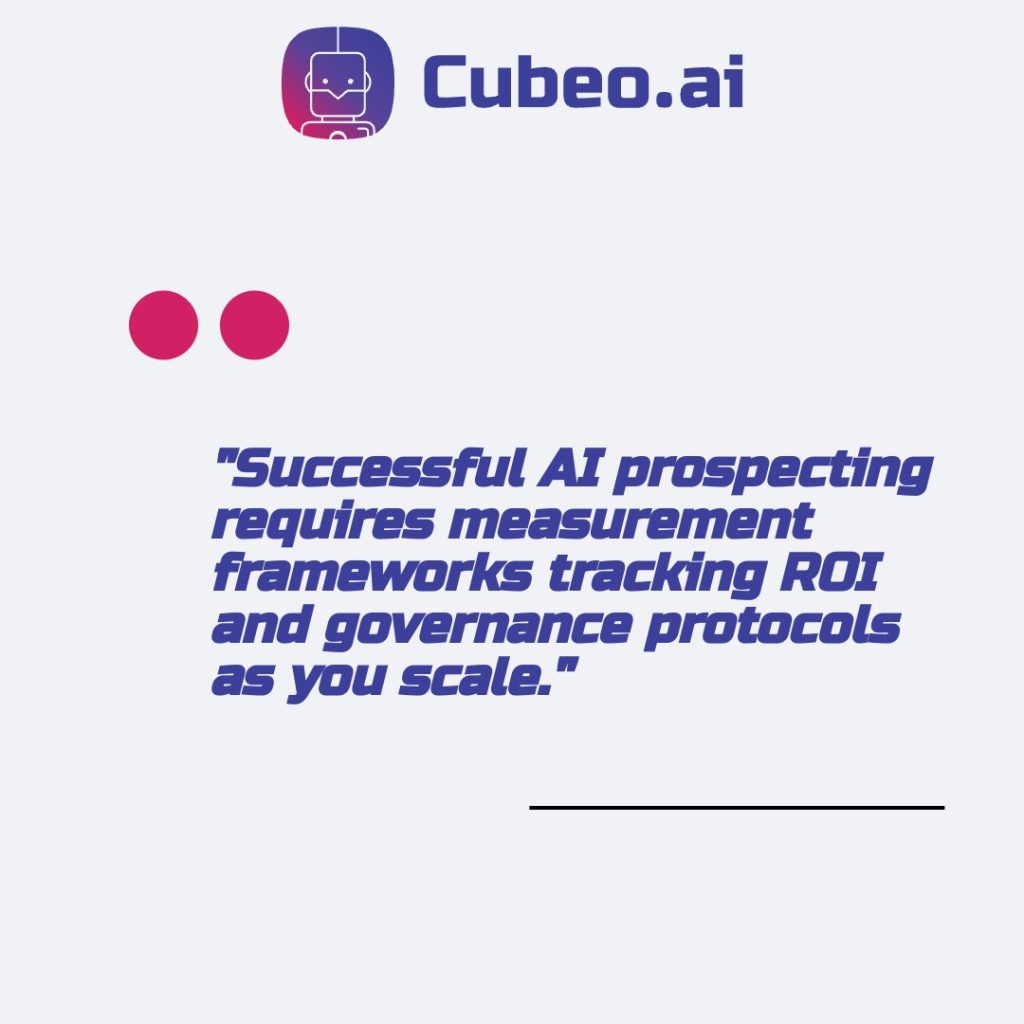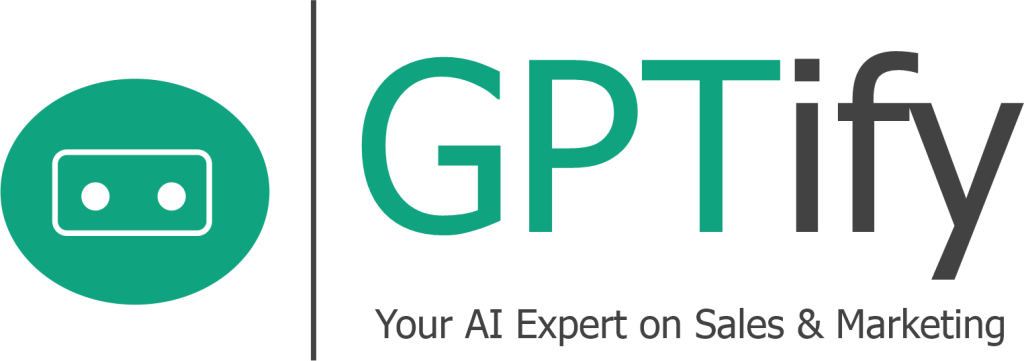Salesforce reports that sales reps spend only 28% of their time actually selling, with 72% consumed by non-selling tasks like research and admin (State of Sales, 2024). The difference between manual cold outreach and AI-powered warm lead conversion comes down to three measurable outcomes:
- Time reclaimed per rep
- Reply-to-meeting conversion rate
- Qualified pipeline velocity
This playbook shows you how to build, measure, and scale an agent team that transforms your AI for sales prospecting process. See our article on How to use AI Agents for Sales Prospecting.
Why AI Sales Prospecting Changes Everything
AI sales prospecting is transforming how revenue teams discover, qualify, and convert prospects. Instead of manual research, it uses intelligent automation that learns from every interaction.
Companies adopting AI-driven prospecting report 76% higher win rates, 78% shorter deal cycles, and 70% larger deal sizes compared to traditional methods.
Action: record your current reply-to-meeting rates and average research time — you’ll use these baselines to measure the impact of a 1-hour pilot.
The Cold Outreach Problem
Manual prospecting creates systematic bottlenecks that limit your team’s performance. Reps spend hours researching LinkedIn profiles, crafting individual emails, and updating CRM records while prospects receive generic messages that rarely resonate. Traditional outreach methods lack the personalization needed to break through inbox noise, resulting in response rates often below 2% for unpersonalized cold outreach.
The core issue stems from volume versus quality trade-offs. You can either send many generic messages or craft fewer personalized ones, but rarely both at scale.
What Success Looks Like
You can expect measurable improvements across key performance indicators with AI sales prospecting. Teams using intelligent prospecting systems achieve 32% higher conversion rates and 25% revenue increases through hyper-personalized outreach (AI-crafted messages using prospect’s recent activity) and real-time signal detection (spotting buyer intent from funding, hiring, product news).
Baseline KPIs to track: reply rate (target 8-15% after personalization vs ~1-3% cold), meeting booking rate (3-7% target), and research time per lead (2-5 minutes); benchmarks from AI sales case studies. Lead qualification accuracy improves from 60-75% with traditional scoring to 85-95% with AI-powered analysis.
The Speed to Value Promise
No-code AI pilots can launch basic lead discovery and enrichment workflows within hours of setup. Connect your CRM, define your ideal customer profile, and activate lead finder agents (AI specialists that scan databases for prospects matching your criteria) to start seeing qualified prospects flow into your pipeline immediately.
Enterprise production deployments require 2-4 weeks for proper governance, security reviews, and team training. However, you can begin testing AI prospecting tools and measuring impact while broader rollout planning occurs.
Beyond Simple Automation
AI agents adapt and improve through continuous learning from interaction patterns and outcome data. Unlike rule-based automation that follows fixed sequences, intelligent prospecting systems adjust messaging, timing, and channel selection based on prospect behavior and response history.
These gains stack — agents learn what works for each prospect segment and improve results automatically over time.

Building Your AI Prospecting Agent Chain
Deploy a complete AI prospecting workflow in one hour using no-code agent chains that handle discovery, enrichment, scoring, and personalized outreach automatically. This tactical playbook shows you how to connect specialist AI agents into a workflow that continuously surfaces fresh prospects and signals.
Discover Prospects That Match Your ICP
Define your Ideal Customer Profile with industry, company size, roles, and tech stack. Lead finder agents scan LinkedIn, public databases and the web to find prospects that match. Connect your CRM and set multi-source discovery rules so the agent validates emails and fills pipeline records automatically. Funding-round alerts and job-change tracking capture prospects during transition moments and lift reply rates 3-5x.
Enrich and Score Leads Automatically
Enrichment agents append verified emails, LinkedIn profiles, funding history and recent news in real time. Use a 0-100 score combining fit criteria (industry, size, budget) and engagement signals (site visits, downloads, social activity). Route scores ≥70 to senior reps, 40-69 to juniors, <40 to nurture. AI workflow research shows large uplifts from predictive scoring and smarter routing, with 40-60% response rate improvements.
Personalize Outreach Using AI Insights
AI personalization agents create openers using each prospect’s LinkedIn activity, company news, or hiring alerts. The system generates two-line hooks and suggested talking points per channel so your outreach references real signals. Set multi-channel sequences across email, LinkedIn and phone with channel-specific personalized hooks that boost meeting acceptance rates 50-70%.
Trigger Smart Follow-ups and Workflows
Configure event triggers to launch workflows when prospects act: email opens fire follow ups, profile views prompt connection messages, bookings trigger pre-call research. No-code AI implementation guides show practical examples of trigger wiring and system integration. Route CRM updates, Slack alerts and calendar invites automatically so reps only handle qualified conversations, achieving 60-80% time savings within 90 days.

Measuring Success and Scaling Safely
Action: Add three dashboard widgets this week — reply rate, meeting booking %, and research time per lead — and compare them to your pre-AI baseline. Successful AI prospecting requires measurement frameworks that track ROI and governance protocols that manage risk as you scale across teams.
Essential KPI Dashboards
Track 3 core measurement categories: lead quality metrics (conversion rates from discovery to meeting to opportunity), time savings across your prospecting funnel (research time per lead, outreach preparation, follow-up coordination), and ROI calculations comparing AI investment against manual prospecting costs.
Set up weekly dashboards showing reply rates, meeting booking percentages, and qualified lead velocity. Measure research time reduction by comparing pre-AI baselines to current performance. Calculate cost per qualified lead including platform fees, training time, and ongoing management. Many pilot teams report positive ROI within 60-90 days when tracking these metrics consistently.
Governance Protocols
Implement AI agent oversight through approval workflows for new prospect lists, data privacy monitoring for contact information handling, and quality control checkpoints where humans review AI-generated outreach before sending. Research involving 43 expert interviews shows that structured governance frameworks significantly improve AI adoption success rates.
No-code AI democratization enables rapid deployment while maintaining security through role-based access controls and audit trails. Run monthly reviews of AI agent performance, quarterly compliance audits, and immediate escalation protocols for prospect complaints or data issues.
Rollout Sprint Methodology
Deploy AI prospecting in 30-day sprints: Week 1 pilot with 2-3 reps, Week 2 gather feedback and adjust workflows, Week 3 expand to full team, Week 4 measure results and plan next sprint. Run the Week 1 pilot with your top two reps, capture three quick wins, and publish a 48-hour update.
Use those wins to onboard the rest of your team. Start with your highest-performing reps as pilot users, then leverage their success stories to drive broader team adoption and reduce implementation resistance.
Risk Management
Common pitfalls: over-automation, poor data quality, and privacy gaps. Mitigate with backup manual-research procedures, template libraries for urgent outreach, and documented escalation paths for technical issues. The AI governance market reached $309 million in 2025, growing 35.74% annually as enterprises prioritize risk mitigation. Run weekly output monitoring and maintain human approval for high-value prospects.




